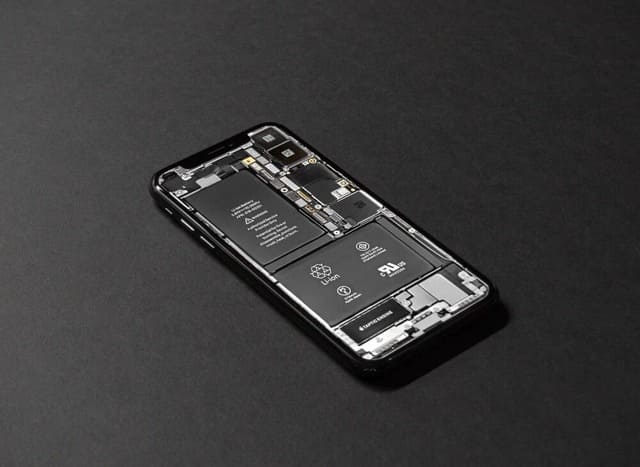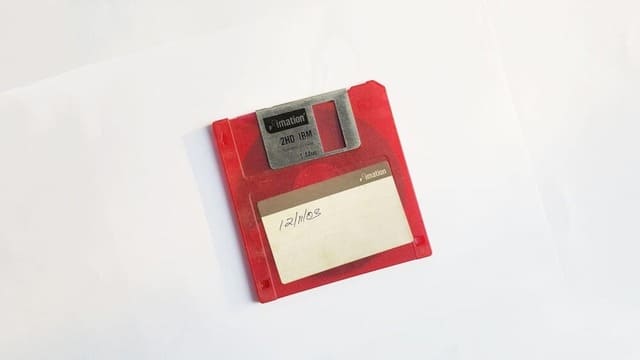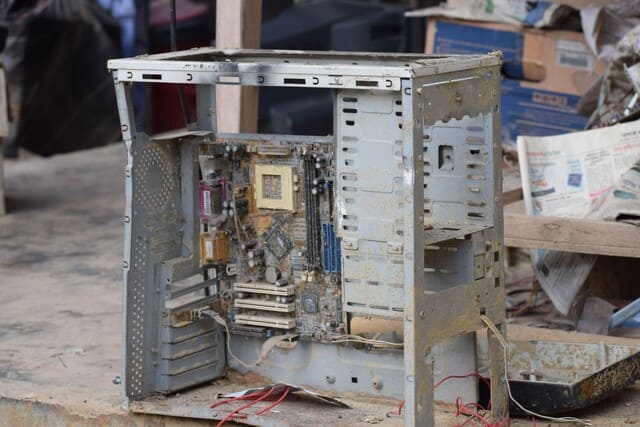E-Waste : Waste Electrical and Electronic Equipment (WEEE): Challenges and Issues
Team WeeeDoIT
- March 16, 2022
Today, it is not uncommon for people to change their phone before it is even unusable. And the same goes for many digital and electronic devices that surround us.
Whether it’s large appliances, small appliances, or our digital terminals that we use daily, all of this generates an increasingly large amount of waste.
These are the famous Waste Electrical and Electronic Equipment, also called WEEE or E-waste.
Increasing in number, we cannot neglect the impact they have on the environment and our health, due to a lack of 100% effective recycling.
What solutions should be favored to address the challenges raised by this increase in E-waste? What are the concrete problems posed by these? WeeeDoIT explains the importance of paying attention to these questions.
What is E-waste?
Let’s start at the beginning, E-waste, also called WEEE, is simply waste from electrical or electronic equipment.
It’s not just digital terminals that are concerned, but all devices that run on mains power, batteries, or batteries. They can be considered household or professional waste depending on their origin.
We find small equipment such as:
- cameras;
- smartphones, computers…
- razors;
- coffee machines…
But we also include household appliances such as washing machines or refrigerators as WEEE.
These devices are considered waste once they are no longer usable.
This can happen for several reasons:
- it is possible to repair it but the cost is higher than buying a new device;
- the equipment is part of a whole and a component that cannot be repaired no longer works;
- the device still works but is considered obsolete and replaced by a later version.
Environmental regulations consider them hazardous waste because they are manufactured with sometimes dangerous and regulated substances.
How are WEEE treated?
WEEE are increasingly problematic because they are sometimes difficult to recycle and reintroduce into the system. After the manufacturing stage, which generates the majority of the device’s carbon footprint, end-of-life is the most polluting.
That’s why it’s important to try to manage the end of life of these electronic wastes as best as possible. And to think about it from the moment of purchase itself, but we’ll talk about that a little later.
Collection by approved organizations
The figures shared by Ecologic in a report on WEEE-related data are quite alarming.
In 2015, 577,927 tonnes of household WEEE were collected. This is a figure that increased by 16.7% compared to 2014. And today we suspect that these figures are even higher.
Ecologic has found that this waste comes mainly from:
- waste disposal sites at 64%;
- distribution at 20%;
- social and solidarity economy at 4%.
We can therefore see the importance of bringing back or donating our used equipment to approved professionals so that they can take care of the treatment of our WEEE.
Recycling and treatment
Once collected, electronic and electrical waste undergo several treatment steps aimed at recycling and maximizing the valorization of their components.
They go through 6 major steps:
- dismantling;
- grinding;
- electromagnetic separation;
- optical sorting;
- non-ferrous metal separation;
- plastic separation.
Not everything can be recycled, and many devices are sent (illegally) to open-air landfills in low-income countries.
That’s why recycling is not always the best ecological solution.
And it is all the more urgent because WEEE are constantly increasing due to a growing consumption of computer equipment.
According to ADEME, on average, each French person owns 15 connected devices (watch, phone, tablet, speaker…). This figure is much higher when taking into account all small electrical appliances and large appliances.
In an age where obsolescence, whether programmed or psychological, is increasingly present, it becomes necessary to pay attention to what we discard, and where we discard it.
The issues related to Waste Electrical and Electronic Equipment
Recycling waste filled with electronic components cannot be done 100%, and that’s normal. These are far too small or soldered together, and separation is impossible.
An explosion of WEEE
The figures published by the RESES (Student Network for an Ecological and Solidarity Society) are clear.
By 2030, we will go from 9kg of WEEE per person, against 7.5kg in 2020 worldwide. In France, we are already at 21 kilos per person!
This is a figure that clearly shows the prominent place our equipment takes today and the fact that their end of life is not sufficiently considered during their manufacture.
RESES explains that in 2021 we reached 57 million tons of WEEE, a weight heavier than that of the Great Wall of China!
Given the direction this growth is taking, experts from the WEEE Forum estimate WEEE at 70 million tons in 2030, in 8 years.
Whether it’s psychological obsolescence that makes us throw away still functional devices or simply the difficulty of repairing certain components, French people often buy new devices even though their old ones are still functional.
Incomplete and difficult recycling
The problem with these WEEE lies in their difficulty of recycling, as mentioned above. After manufacturing, this is the most polluting stage in their life cycle, contrary to what one might think.
You can clean your emails, limit sending attachments, and turn off your wifi routers when you go on vacation, but if your old equipment lingers in your drawers, their impact becomes significant.
This is mainly because our electronic and electrical devices contain many precious and rare materials that are difficult to extract without using too many resources (water, energy, human…).
We are talking about metals such as:
- gold;
- silver;
- copper;
- cobalt;
- lithium;
- neodymium;
- indium;
- gallium.
Even in very small quantities in our devices, they remain interesting to exploit in the manufacture of new equipment.
There is no longer any need to deploy as much energy to extract them thanks to urban mining. In addition to being more ecological, this helps to somewhat reduce dependence on rare metals and the high risks of shortages.
The negative impact of WEEE
The NGO Basel Action Network (BAN) in its investigation – Holes in the Circular Economy: WEEE Leakage from Europe estimates that Europe illegally exports around 352,474 tonnes of electronic waste per year, according to European law.
For the United States, they estimate that 50% to 80% of the waste collected for recycling is exported to low-income countries such as China, India, or the African continent. But this is not illegal for this country, which has not signed the Basel Convention.
These practices, far from recycling, which properly values and treats these wastes considered hazardous, have negative effects on the environment and the health of people near open-air landfills.
On the environment
If WEEE is considered hazardous waste by environmental regulations, it is because their components must be handled with caution.
Without a recycling system that handles them correctly when they end up on the other side of the world, these components end up buried underground. They spread into nearby rivers and the surrounding biodiversity, disrupting agriculture and the health of residents.
On children
In low-income countries, it is not uncommon for trafficking in WEEE to develop around these open-air landfills where computers, phones, refrigerators, etc., are piled up.
Many children spend their days rummaging through these wastes to exploit the rare materials by burning them.
3 solutions to reduce and valorize WEEE
Extend the lifespan of devices
Since it is the manufacturing and end-of-life stages that pollute the most when it comes to WEEE, it is important to try to break free from the psychological obsolescence that certain large companies’ marketing imposes. And the unrestrained release of new products doesn’t help either.
When buying a new device, it is important to look at its repairability index. The higher the score, the easier it will be to repair and thus extend its use.
Today, there are also many approved repairers and places that help you repair your equipment voluntarily.
Buy less but better
For the acquisition of a new equipment, there is no longer necessarily a need to buy new. There are many solutions such as renting equipment for your IT fleet or buying second-hand.
But if you have to buy new, ask yourself these questions:
- Do I really need it?
- Is it a fashion trend or is there a real utility behind my purchase?
- Is it necessary to have so many features for my needs?
There are also companies that offer electronic equipment made from recycled materials and labeled ethical and responsible.
Implementing a circular economy
The AGEC law and its new measures aim to reduce waste and increasingly integrate products into a circular economy, including digital ones.
We think in particular of refurbished products, which allow the valorization of old devices that have been checked and tested by approved companies. In addition to extending their lifespan, this avoids the most polluting step: their manufacture.
—
It is a real virtuous circle because the components recovered from recycled products are valued in new tools. Or old devices still in working order are checked and restored to working order, almost like new.
If we are called WeeeDoIT today with 3 Es, it is obviously to refer to these electrical and electronic wastes.
Our main objective? Putting the circular economy at the service of your IT through various green IT services.
Team WeeeDoIT & Emma




